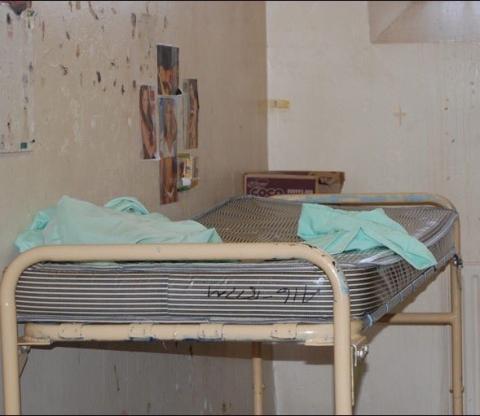Anaesthetising the Pain: Prison chaos and the enormous demand for drugs

Source: @prison.uk
The revelations from Panorama (BBC, 8.30pm 13th February, 2017) on HMP Northumberland have put the problems of drug taking in prisons firmly into the spotlight. The terrible harms psychoactive drugs create for both prisoners and prison officers are laid bare: secretly recorded footage shows prisoners overdosing on drugs, a prisoner threatening an officer with a weapon and a prison officer collapsing after inhaling fumes from the psychoactive drug ‘Spice’.
Seen through the eyes of an undercover BBC journalist who joined the Prison Service as prison officer, the chaos and harms of the privately run Sodexo jail are revealed for all to see. Concerns around levels of safety for both prisoners and staff and the ease at which psychoactive drugs are getting into prisons (such as by prison visits, ‘drones’ and prison officer smuggling) are raised by the BBC journalist – who illustrates part of the problem himself by being able to smuggle a camera into HMP Northumberland to record conversations and events.

It is little surprise that the media coverage following the Panorama programme has focused on the availability of drugs in prison and the apparent inability of prison officers to control their supply and use by prisoners (and indeed their control over the prison population more broadly). Yet the debate should not be restricted to talk of staffing, security and prisoner violence alone. It is important that we focus on the demand for drugs in prison and the need to increase safety by reducing the harm of drug taking for all who live or work in prisons. .
Drug taking in prison should be situated within two of the most painful harms of imprisonment: the conscious experience of time and the loss of personal autonomy. It is well documented that prison life is both highly regulated yet filled with emptiness. Drugs distort time and prisons are all about the wasting and loss of time. Many prisoners attempt to suspend time and find ways to manage life on the edge of this meaningless and dehumanising penal abyss.
Drugs, especially cannabis, can be a means of controlling unstructured time by inducing sleep, thus making time consciousness much less evident. Psychoactive drugs, like Spice (a synthetic version of cannabis), alter perceptions, moods and can eve induce unconsciousness. Though the psychoactive drug Spice presents serious damage to health and impacts negatively upon behaviour this should be weighed against the way in which it eases the pains of confinement for the prisoner.
Taking drugs in prison can provide sanctuary and be a means of self-medication and self-help. Drugs can help mask the harsh realities of penal regimes and ease the consequences of being exposed to low levels of mental and physical stimulation. They provide a ready-made anaesthetic and prisoners often take drugs to alleviate physical or emotional pain. Drugs can become ‘chemical comforts’ to deal with loneliness, trauma, isolation or alienation rather than for hedonism. Imprisonment is highly stressful and taking drugs may become a crucial coping mechanism to get through hard times and the mundane daily monotony of prison life.

Source: hamptonroads.com
Drug taking should be considered as a direct consequence of the processes of penal confinement itself and as an important survival strategy for many prisoners. The problem of drug taking in prison is not new but something that has been present in the reformed prisons since the 1800s, albeit at that time the concern was around alcohol and tobacco and their relationship to prisoner violence.
Focusing only on supply and lapses in security, misses the crucial point that prisons generate on a daily basis enormous demand for drug taking. We need to take the harms of psychoactive drugs seriously, as evidenced in the Panorama programme, but also acknowledge that a harm reduction approach is the most sensible strategy for moving forward. In so doing we should acknowledge that the only effective way to increase safety and reduce drug taking by prisoners is by radically reducing the size of the prison population itself.
A slightly longer version of this article was published as “Why there is such an enormous demand for drugs in UK prisons” in The Conversation on the 14th February 2017.
David Scott, The Open University
